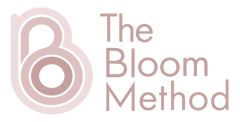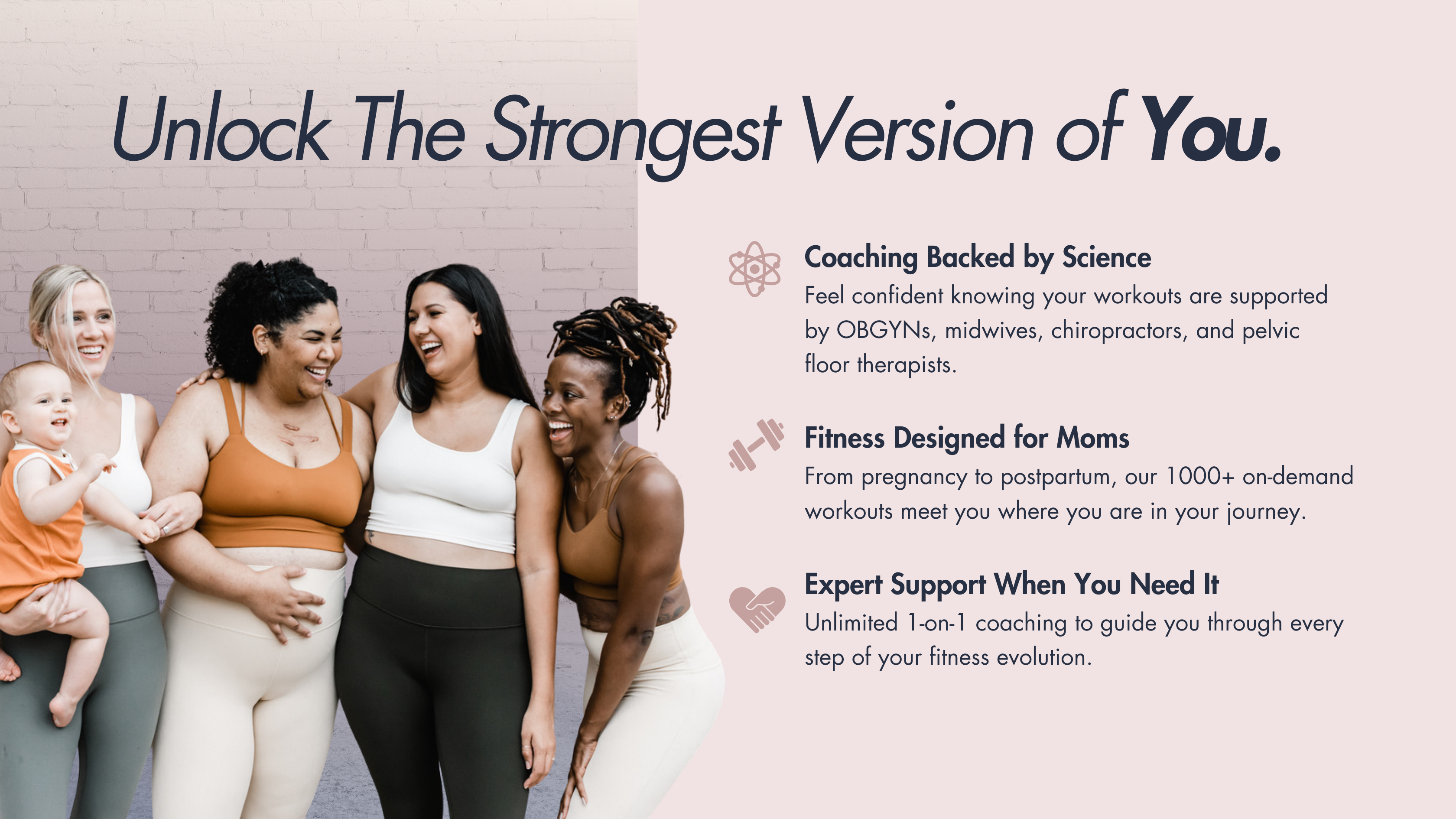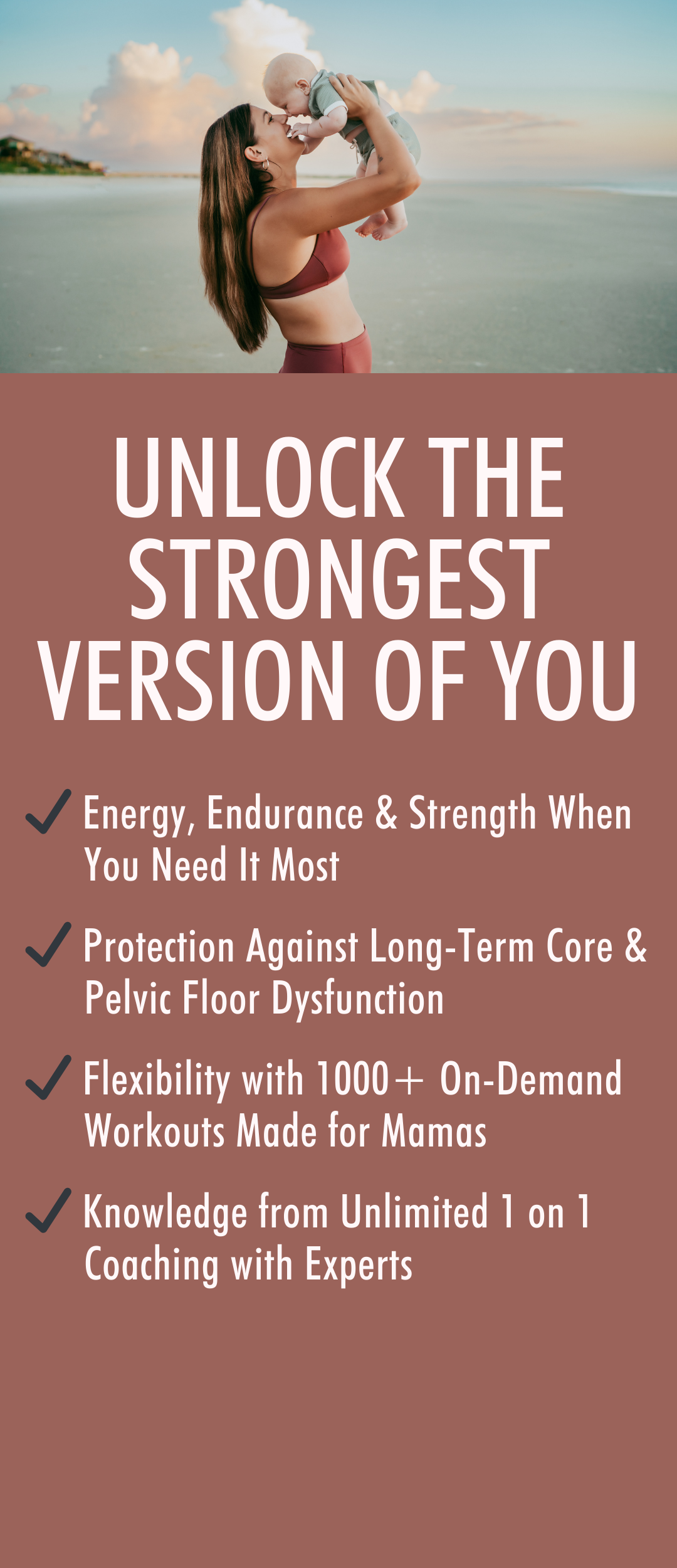How and Why to Use a Pregnancy Fitness App for Diastasis Recti

During pregnancy, you expect your body to change.
But this expectation doesn’t make the changes any easier.
Especially if your new pregnancy body comes with back pain, body dysmorphia, and limitations on exercises you once loved.
Diastasis recti occurs when your core muscles separate and the connective tissue between them stretches. This is perfectly normal and even expected during pregnancy and postpartum.
But diastasis recti is understudied and misunderstood by the pregnancy community. Conversations about core separation are driven by fear and outdated “dos” and “don’ts.”
At The Bloom Method, we often work with moms who are afraid to try to heal diastasis recti from home. A pregnancy fitness app feels intimidating, but so does existing with active symptoms of core dysfunction.
If this is you, read on to learn how you can safely support diastasis recti from the comfort of your home.

How to Know If You Have Diastasis Recti
You’ve talked to your doctor about the doming around your midsection.
If you’re postpartum, you might be considering a “mommy makeover.”
Most of the time, diastasis recti is easy to recognize. You’ll notice squishines around your belly that doesn’t resolve with diet or exercise.
Or you’ll struggle with common symptoms like back pain, core dysfunction, incontinence, painful sex, or trouble lifting heavy objects.
The important thing to understand about diastasis recti is that the width of your separation doesn’t necessarily represent the extent of your injury. Usually it’s the depth that can tell us more about how much healing you need.
Use this Bloom Method video to know if you have diastasis recti. And if so, how severe the gap is.
Misconceptions About Healing Diastasis Recti (And Why You Shouldn't Be Afraid of Using a Pregnancy Fitness App)
One of the main reasons women don’t address diastasis recti is because of the misconceptions. Everyone has something different to say about healing diastasis recti — and few of the women actually see results. Let’s unpack some of these misconceptions and get you in the right mindset for healing…
Misconception: “Working out makes diastasis recti worse.”
Correction: The way you perform workouts make diastasis recti worse.
The potential issue here is that core-focused exercises can put pressure on the fragile connective tissue between your abdominal muscles. While it's important to choose the right exercises at every stage of your re-strengthening, it's more about how you do the exercise that can have a potential diastasis recti worse.
With the right core recruitment, form, and breathing mechanics, most exercises have the ability to help correct core separation quickly.
With intention and direction, exercises are one of the best things you can do when preventing or healing diastasis recti. Not only that but exercise is one of the most powerful tools you have to prepare your body for pregnancy and postpartum.
Don’t allow fear to keep you from exercising. Instead, find intentional workouts that are created specifically to strengthen your connective tissue and prevent diastasis recti.
Misconception: “I’m going to need surgery.”
Correction: Diastasis recti surgery is incredibly uncommon.
A tummy tuck is sometimes used to repair diastasis recti when the injury is so complex that it can’t be fixed with exercise. The need for this surgery is incredibly uncommon, and it usually occurs because women don’t have the right tools or guidance to close their abdominal gap.
Diastasis recti exercises should be intentional, science-backed, and created by women. They aren’t just modifications to your regular exercise routine. If your diastasis recti exercises don’t include 360 degree breathing, and deep core re-training, you’re probably doing the wrong exercises.
Misconception: “I need to force the gap closed with high-intensity workouts.”
Correction: It’s not how often you workout, it’s how well you do it.
We have this idea in our heads that workouts and gym sessions aren’t productive unless we’re breathing hard and sweating buckets.
But this mindset might cause women to believe diastasis recti healing is only for women with a high exercise ability. This simply isn’t true. There’s no prerequisite or exercise level that you have to meet in order to heal.
The best diastasis recti exercises are incredibly accessible. They include 360 degree breathing and require intra-abdominal pressure regulation no matter which exercises you try. From there, the intensity level of your exercise is completely up to you. Just remember, a strong and functional core is your gateway to powerful exercise and functional movement.
Misconception: “I’ll just have to learn to live with it.”
Correction: Your body is on your side when healing diastasis recti.
You probably know someone who’s dealing with diastasis recti years after labor and delivery. Unfortunately, this is common because women don’t have the tools and resources they need to support their postpartum bodies.
But this doesn’t have to be your story. Especially if you can find those tools and resources that so many women are missing. And we promise they exist. They are intentional exercises and movements that train your core, pelvic floor, and abdominal muscles how (and when) to engage.
Misconception: “I have to go to the gym to heal diastasis recti.”
Correction: Diastasis recti healing can happen anywhere.
Some diastasis recti exercises are so simple, you can begin them from your bed. The women who use The Bloom Method typically start their exercises a few days after birth.
Diastasis recti exercises can be done at the gym with special equipment. But they can also happen from your bedroom floor during baby’s naptime. Intentional exercises, breathwork, functional movement, and proper core engagement are the fundamentals behind diastasis recti healing — and they can be done safely by any mom.

Your 4-Step Plan for Healing Diastasis Recti
-
The Right Pregnancy Fitness App
The right pregnancy fitness app will teach you safe at-home exercises you can do at naptime. It should also show you how to maintain functionality and strength through both pregnancy and postpartum.
The benefit of a pregnancy fitness app is that it’s so easy for busy moms. You don’t need special equipment, a personal trainer, or more than fifteen minutes a day. But you do need accountability, mindfulness exercises, and a reason to show up for yourself. Let your pregnancy fitness app be that for you.
-
An Informed Physical Therapist
For women struggling with severe diastasis recti after pregnancy, a physical therapist may be helpful. You’ll need to ask your physical therapist the right questions to make sure they’re a good fit for you. We also recommend that you keep up your pregnancy fitness app exercises at home — so you can heal faster, support everyday movement, and encourage good mental health.
-
Mental Health Support
The right pregnancy fitness app should be there to support your mental health during the most challenging days. Whether you’re getting through the last trimester of pregnancy or nursing a newborn, you need body-positive support that’s mindful of your needs. Many women who use The Bloom Method love it for the mental health support it provides — and tune in for meditations as often as exercises.
-
Accountability and Community
Motherhood is a unique journey. Pregnancy and postpartum injuries like diastasis recti are difficult to face alone. Plugging into a community is one of the best things you can do as a new mom. It’s so important to connect with women who have been in your shoes and to encourage women who are experiencing similar challenges. Most importantly, it’s up to all of us to change the conversation surrounding women’s health and women’s bodies.
The Bottom Line: A Pregnancy Fitness App Is One Part of a Multi-Faceted Plan to Heal Diastasis Recti
Yes, you can work to heal diastasis recti from home.
You can reclaim your power and learn how to strengthen your pregnancy body without injuring it.
You can find the tools to heal your core, even years after giving birth.
Most importantly, you can tap into a group of supportive women who are changing the narrative about pregnancy fitness, recovery, and body image.
At The Bloom Method, we believe women are capable and deserving of so much more than what they receive during pregnancy and postpartum. Along with dozens of doctors, practitioners, and physical therapists, we’re championing a better future for women’s health.







